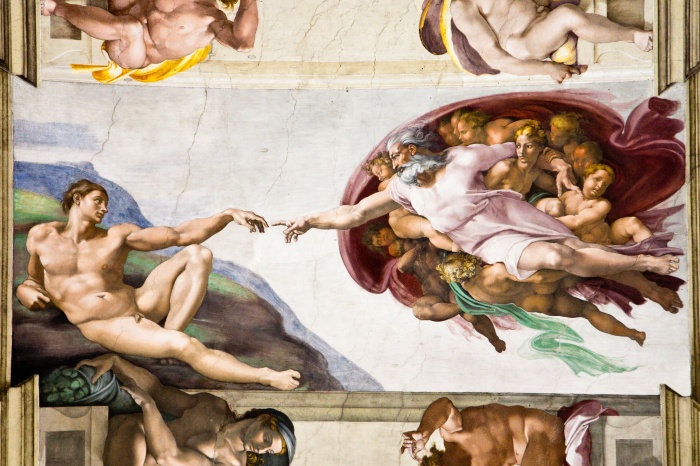 This post is part 2 of 2 (see yesterday’s post on the Polarity Principle). We’ve repeated the introduction for context.
This post is part 2 of 2 (see yesterday’s post on the Polarity Principle). We’ve repeated the introduction for context.
In his encyclopedic book exploring the mysteries of science and philosophy, Guy Murchie (1978) identifies polarity and transcendence as the two great mysteries of all life systems.
Murchie’s profound insight is essential to our research and understanding of virtue, happiness, and meaning—the three constituents of the good life. Contrary to the predominant binary thinking of only pursuing what is positive, Guy supports the dialectical approach of second wave positive psychology (PP 2.0). That is, we need to accept the principle of polarity that permeates every aspect of human existence—good and evil, God and the devil, happiness and sadness, life and death…
Transcendence is also necessary because it integrates the opposites and moves towards greater connectiveness and higher consciousness. In terms of evolution, it is the inevitable process of moving from single-celled organisms towards more complex living systems, and from simple ideas such as “positive is good; negative is bad” towards more complex concepts like yin-yang.
Thus, the deep secret of the good life is to accept and transcend polarities. From the perspective of PP 2.0, acceptance and transcendence are the essential yin-yang processes. Acceptance represents the yin process of enduring and embracing life in its totality, with letting go and humility; transcendence represents the yang process of growth and self-expanding to the point of losing oneself in something greater and grander.
The Transcendence Principle

Murchie (1978) defines transcendence as “going beyond common experience” (p. 494). This common daily experience encompasses our sensory-perceptual experiences, space-time limitations, our struggle for survival, and the pursuit of creature comforts and pleasures. Transcendence occurs when we become aware of the spiritual dimension of meaning (Frankl, 1985; Wong, 2012) or, metaphorically, stumble upon a staircase to the spiritual realm (Haidt, 2012).
Citing Thomas Browne’s statement, “We are more than our present selves,” Murchie (1978) sounds the optimistic note that we are all capable of growing and expanding ourselves through “the natural law of cooperation” which is the spiritual “golden rule” (p. 513), which reorients our way of living from egotistic concerns to altruistic caring for others, from earthly strivings to spiritual pursuits (Emmons, 1999).
Referring to Aristotle’s statement “spirit prevailing matter,” Murchie (1978) comments, “So the spirit-mind associates itself with finity in order to grow” (p. 519). Thus, one individual expands to humanity, and one individual consciousness becomes absorbed in the “all pervasive, if hypothetical, superconsciousness called the universal mind” (p. 500).
In a poetic flash, Murchie (1978) writes, “Our earthly life then, in simple terms, is a tentative tuning in on a particular collection of human cells—a transcendent resonance of protein molecules with intangible awareness in an illusory space-time continuum—a harmonic, a geometric interval, a note in a song of eternal and incomprehensive mystery” (p. 519).
To such majestic mystery, our only response is a sense of awe and wonder. It is a realization that life is much, much more than our mundane daily “common experience,” and we are more than “our present selves.” True virtue, happiness, and meaning all hinge on the principle of transcendence at all levels of our existence—from each situation and life as a whole, to the cosmic realm (Wong, 2014b).
In a world full of violence and conflicts, it is worth repeating that transcendence is inherent in the polarity principle. It takes something different, something better, to integrate or bridge the opposites, creating a new unity, a new reality. Thus, polarities lead to harmony and a higher order, rather than conflicts and chaos, because of the process of transcendence.
The inescapable moral dimension of true transcendence stems from its relational orientation—loving God and loving your neighbour. According to Aron and Aron’s (2012) self-expansion model, love is the process of expanding oneself by including others. This expanding connectiveness grows from marriage, family, and community, to transpersonal realms.
The principle of transcendence helps us understand why gratitude is so essential to ourwell-being. The reason is that gratitude reorients us from selfish concerns to the selfless appreciation of blessings from other people, external circumstances, and the Source of all life.
Thus, the positive psychology of the good life consists of accepting and transcending the dark side of human existence. The process of transcendence transforms the isolated self to a community and transforms evil, suffering, and tragedy to the spiritual experiences of grace, compassion, and serving the greater good.
In sum, PP 1.0 is a product of the privileged land of peace and prosperity; it is represented by a happy face. PP 2.0 is a product of the real world of polarities—peace-war, prosperity-poverty, and good-evil; it is represented by the symbol of yin-yang. Sustainable success needs to be built on integrating and transcending polarities.
References
Aron, A., & Aron, E. N. (2012). The meaning of love. In P. T. P. Wong (Ed.), The human quest for meaning: Theories, research, and applications (2nd ed.; pp. 185-208). New York, NY: Routledge.
Emmons, R. A. (1999). The psychology of ultimate concerns: Motivation and spirituality in personality. New York, NY: Guilford Press.
Frankl, V. E. (1985). Man’s search for meaning (Revised & updated ed.). New York, NY: Washington Square Press.
Haidt, J. D. (2012). Religion, evolution, and the ecstasy of self-transcendence. TED. Retrieved from www.ted.com/talks/jonathan_haidt_humanity_s_stairway_to_self_transcendence?language=en
Kwee, M. G. T. (2012). Relational Buddhism: A psychological quest for meaning and sustainable happiness. In P. T. P. Wong (Ed.), The human quest for meaning: Theories, research, and applications (2nd ed.; pp. 249-276). New York, NY: Routledge.
Murchie, G. (1978). The seven mysteries of life: An exploration of science and philosophy. New York, NY: Houghton Mifflin.
Reker, G. T., & Wong, P. T. P. (2012). Personal meaning in life and psychosocial adaptation in the later years. In P. T. P. Wong (Ed.), The human quest for meaning: Theories, research, and applications (2nd ed., pp. 433-456). New York, NY: Routledge.
Ryff, C. D. (2012). Existential well-being and health. In P. T. P. Wong (Ed.), The human quest for meaning: Theories, research, and applications (2nd ed., pp. 233-248). New York, NY: Routledge.
Schneider, K. J. (2013). The polarized mind: Why it’s killing us and what we can do about it. Colorado Springs, CO: University Professors Press.
Wong, P. T. P. (2009). The depth positive psychology of Carl Jung. In S. J. Lopez (Ed.), Encyclopedia of positive psychology (Vol. 1, pp. 545-546). Oxford, UK: Wiley-Blackwell.
Wong, P. T. P. (2011). Positive psychology 2.0: Towards a balanced interactive model of the good life. Canadian Psychology, 52(2), 69-81.
Wong, P. T. P. (2012). What is the meaning mindset? International Journal of Existential Psychology and Psychotherapy, 4(1), 1-3.
Wong, P. T. P. (2014a). From attunement to a meaning-centred good life: Book review of Daniel Haybron’s Happiness: A very short introduction. International Journal of Wellbeing, 4(2), 100-105.
Wong, P. T. P. (2014b). Viktor Frankl’s meaning seeking model and positive psychology. In A. Batthyany & P. Russo-Netzer (Eds.), Meaning in existential and positive psychology (pp. 149-184). New York, NY: Springer.
Wong, P. T. P. (2016, July). PP2.0 Summit explores the new vistas of second wave positive psychology: How to embrace the dark side to make life better. Positive Living Newsletter. Retrieved from http://www.drpaulwong.com/inpm-presidents-report-july-2016/
Wong, P. T. P., Reker, G. T., & Gesser, G. (1994). Death Attitude Profile – Revised: A multidimensional measure of attitudes toward death (DAP-R). In R. A. Neimeyer (Ed.), Death anxiety handbook: Research, instrumentation, and application (pp. 121-148). Washington, DC: Taylor & Francis.
Paul Wong is Professor Emeritus of Psychology at Trent University and a Scholar with Virtue, Happiness, & the Meaning of Life.




 This post is part 2 of 2 (see
This post is part 2 of 2 (see 

